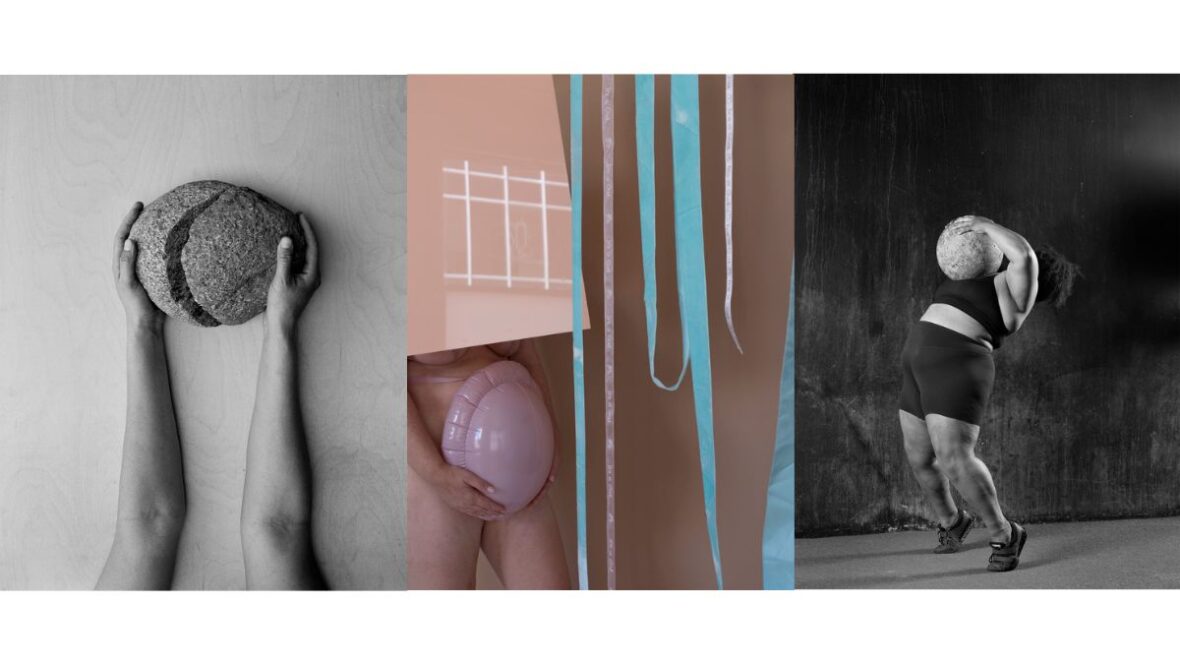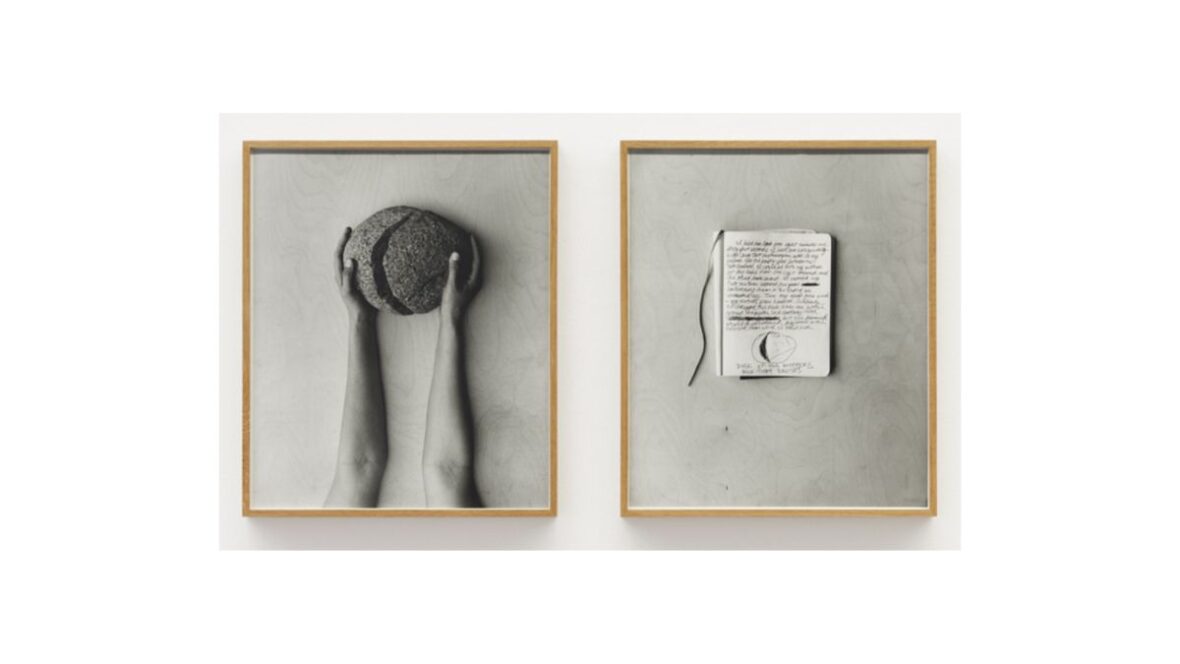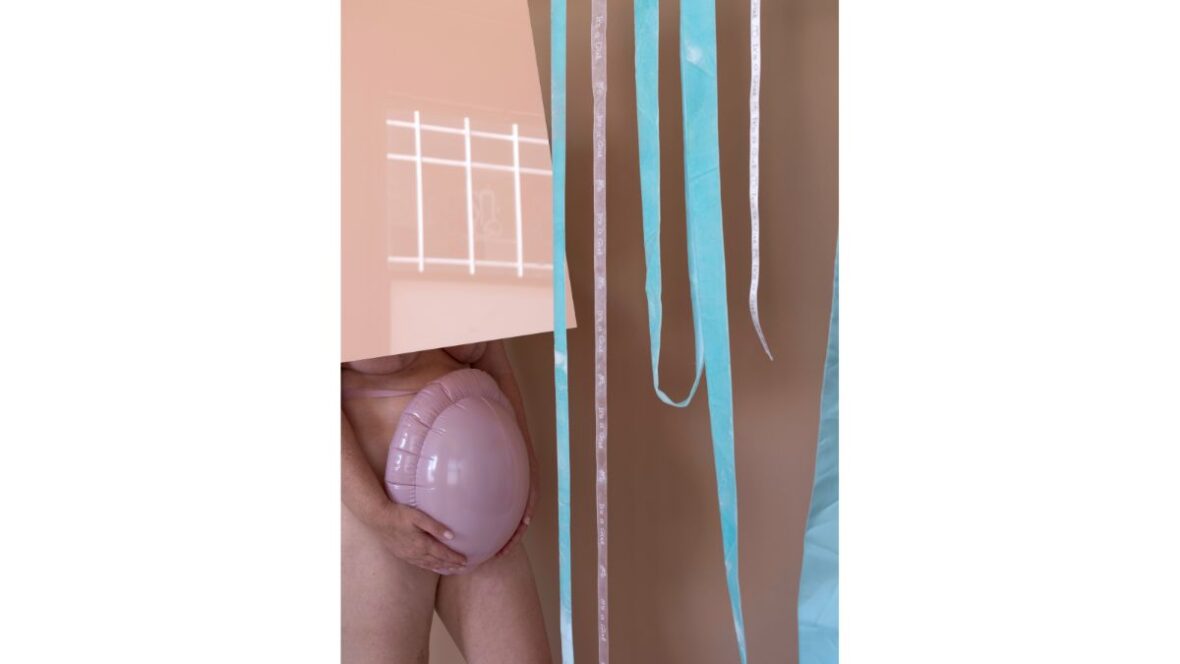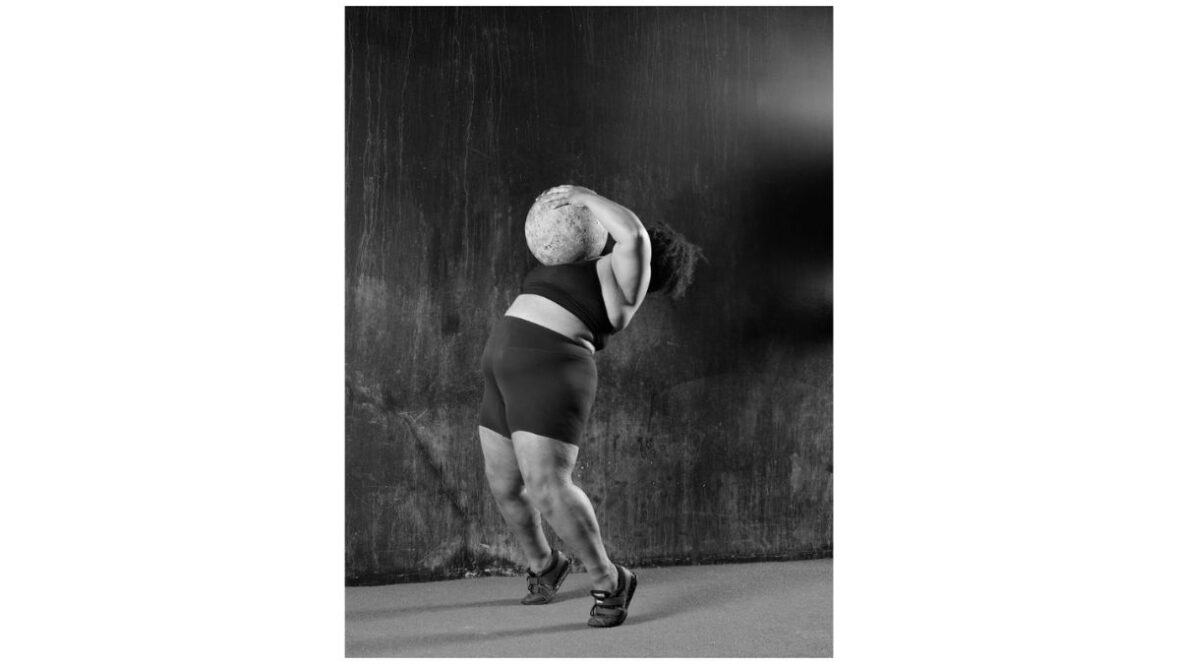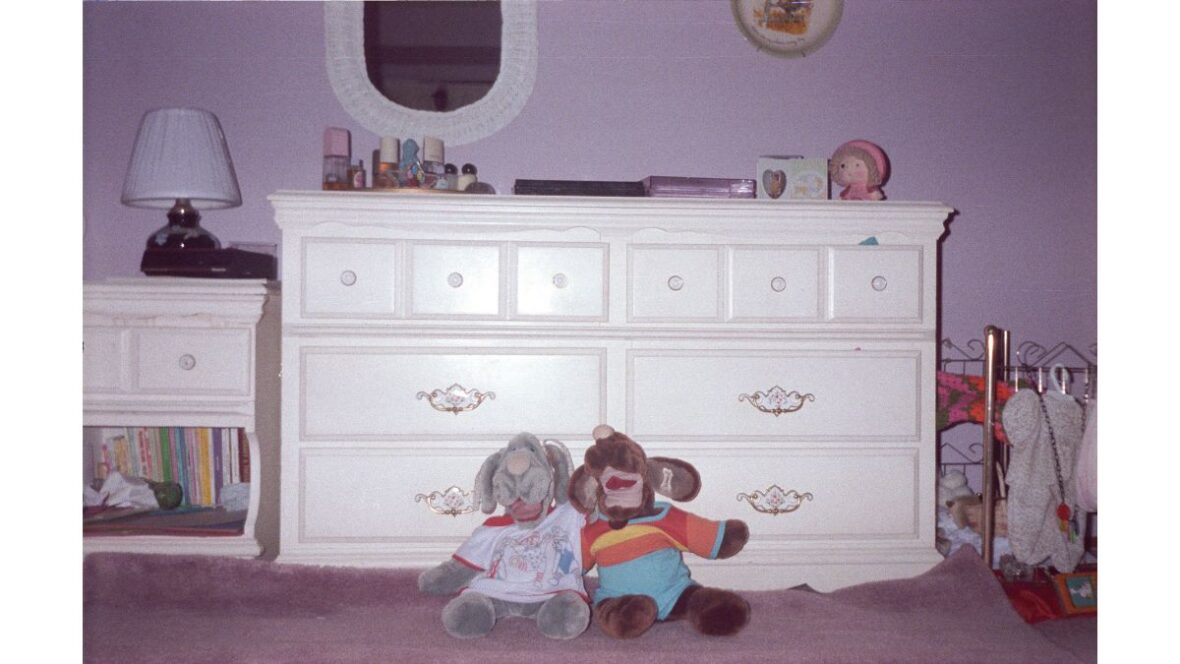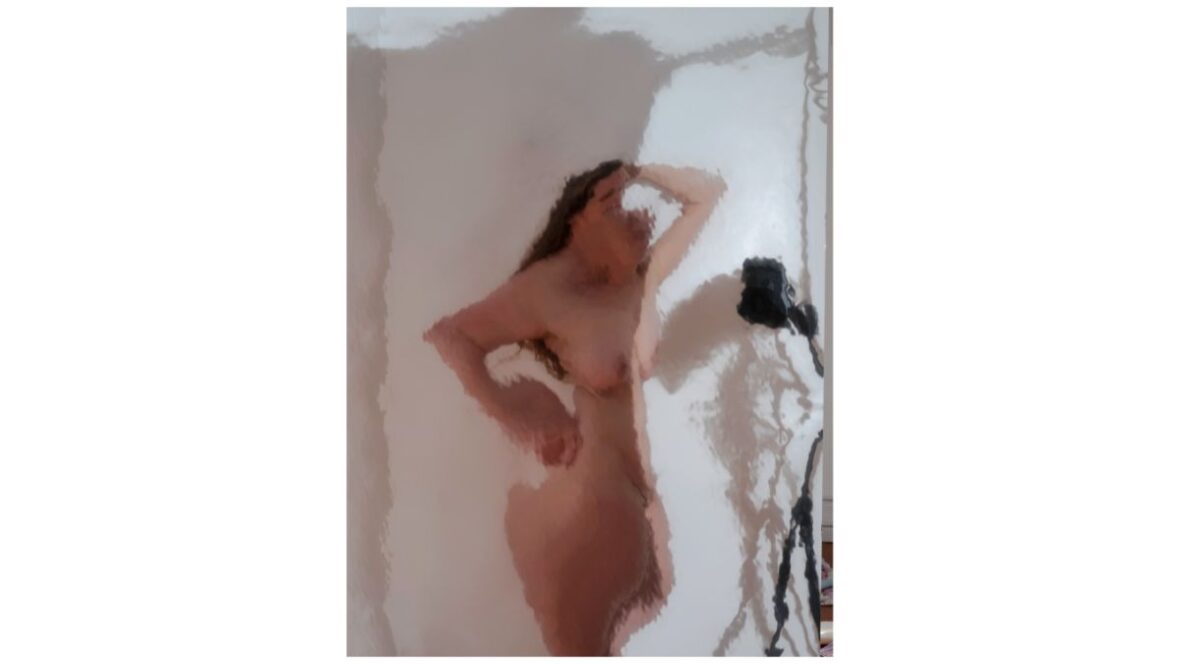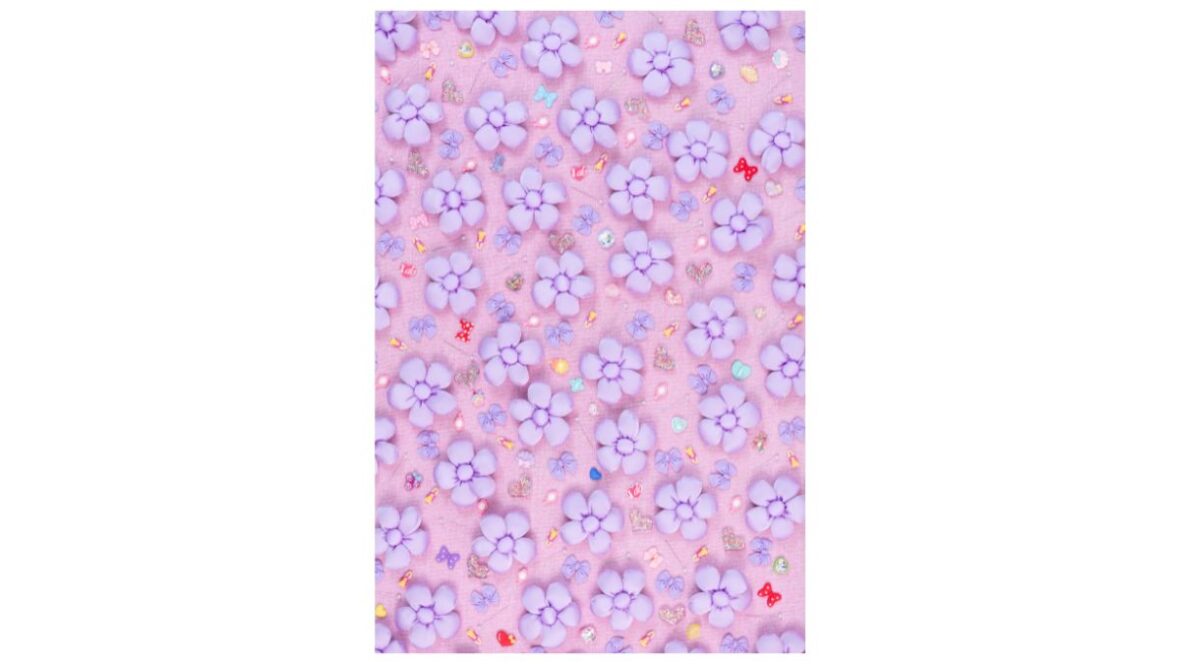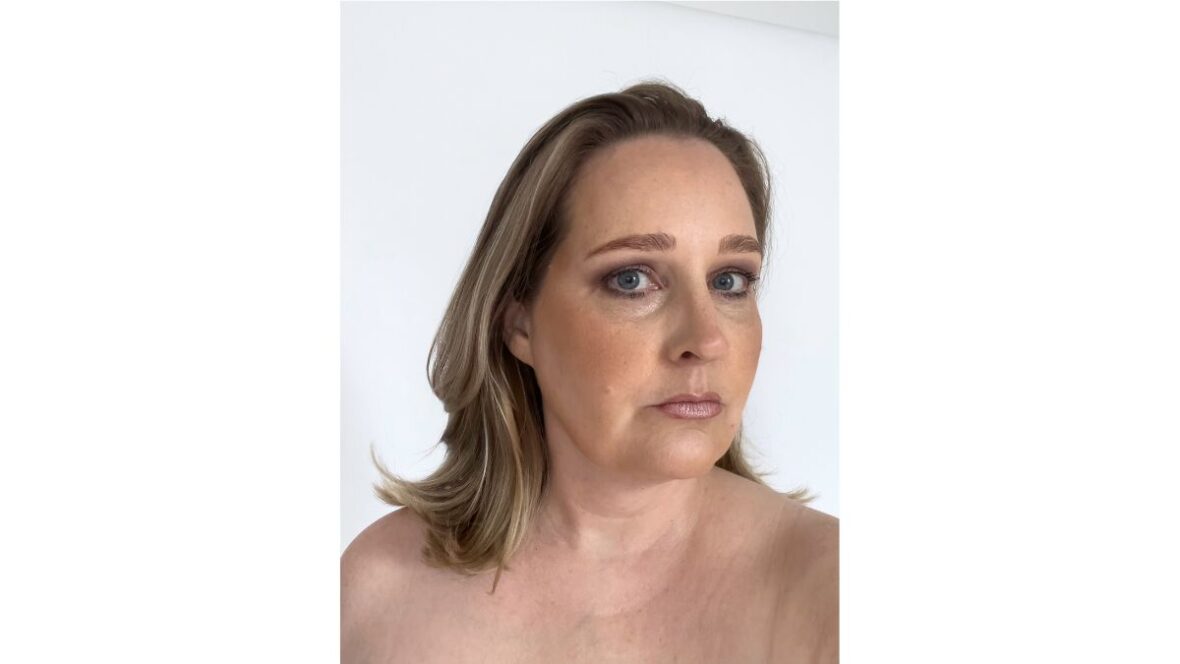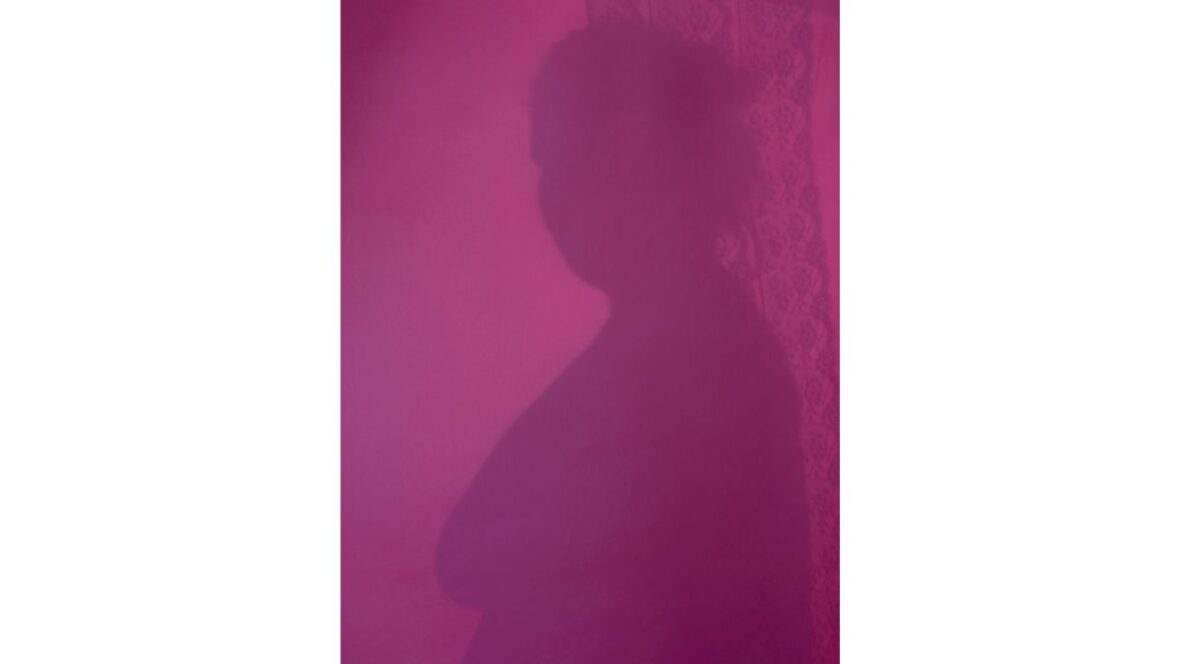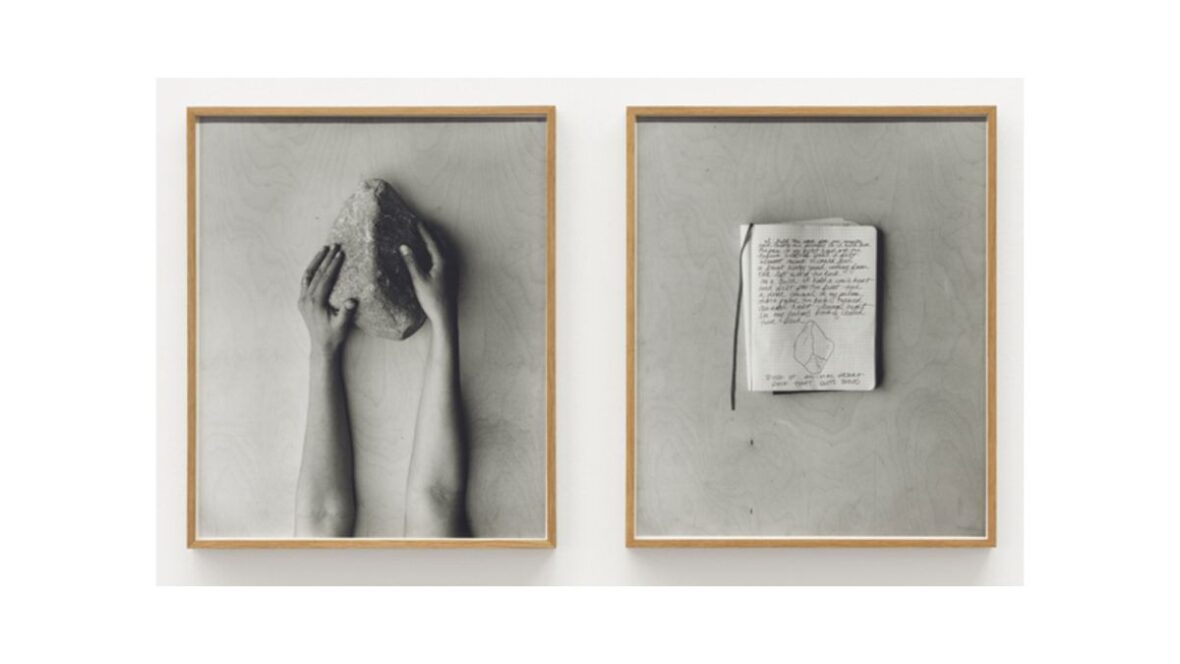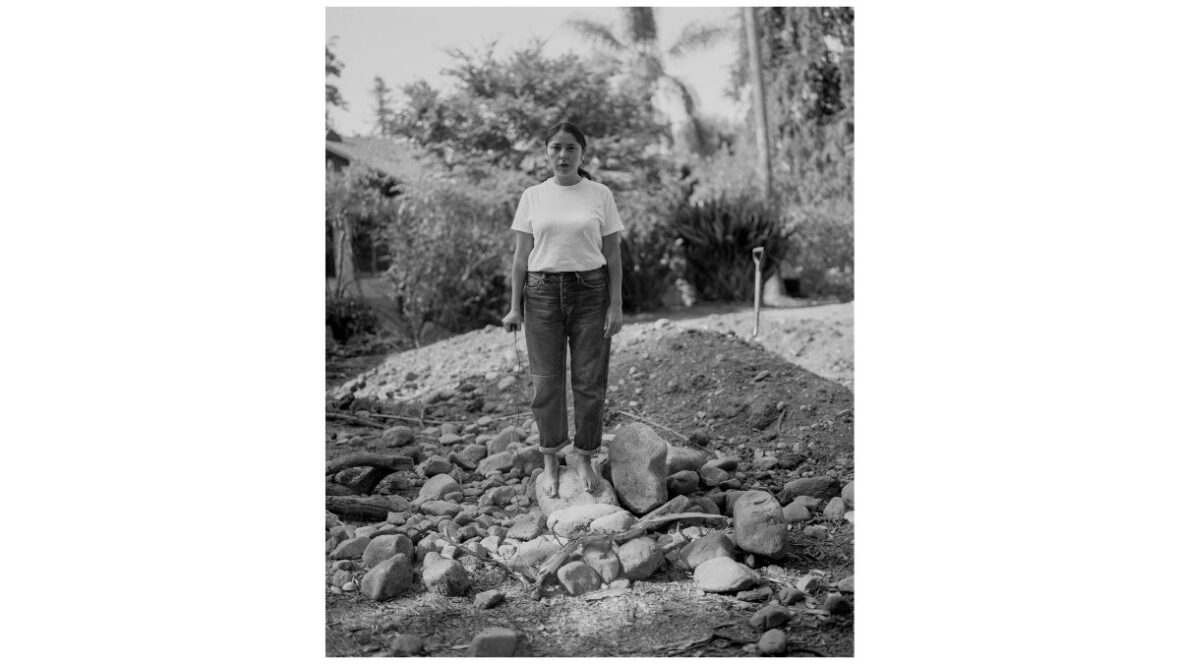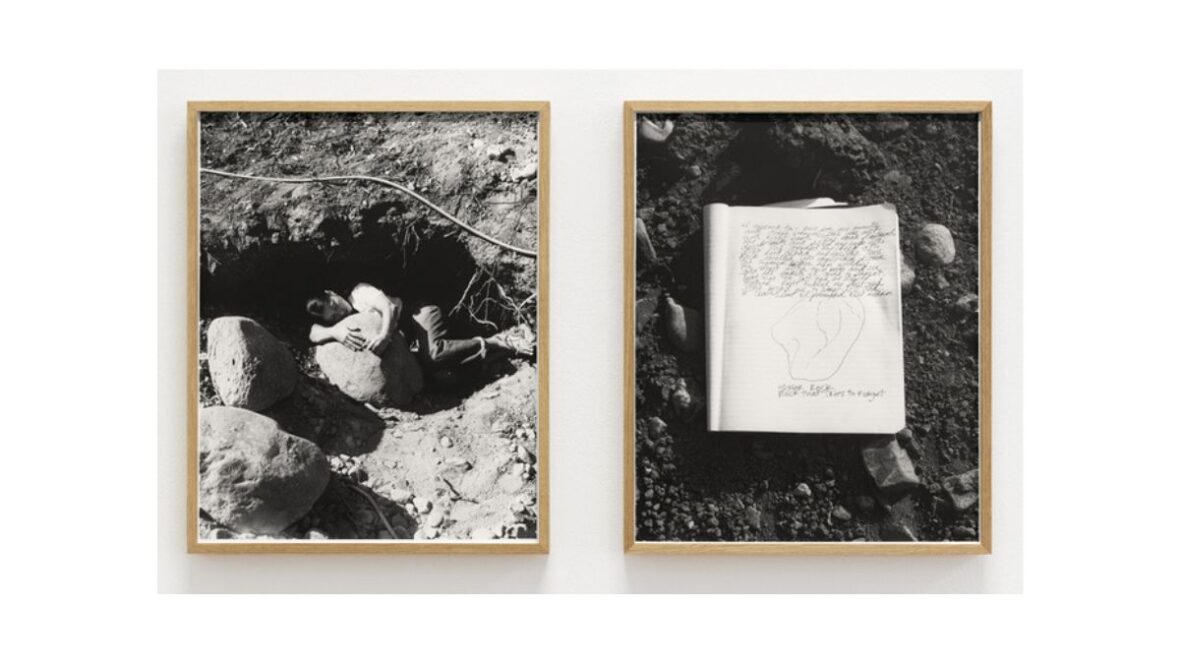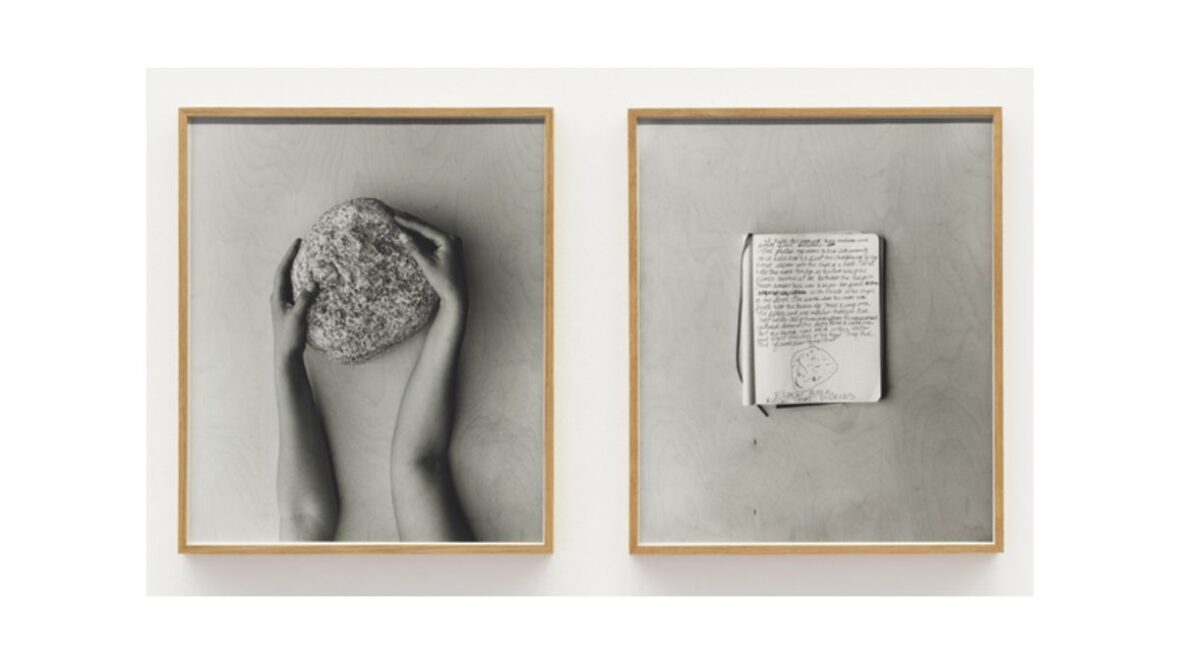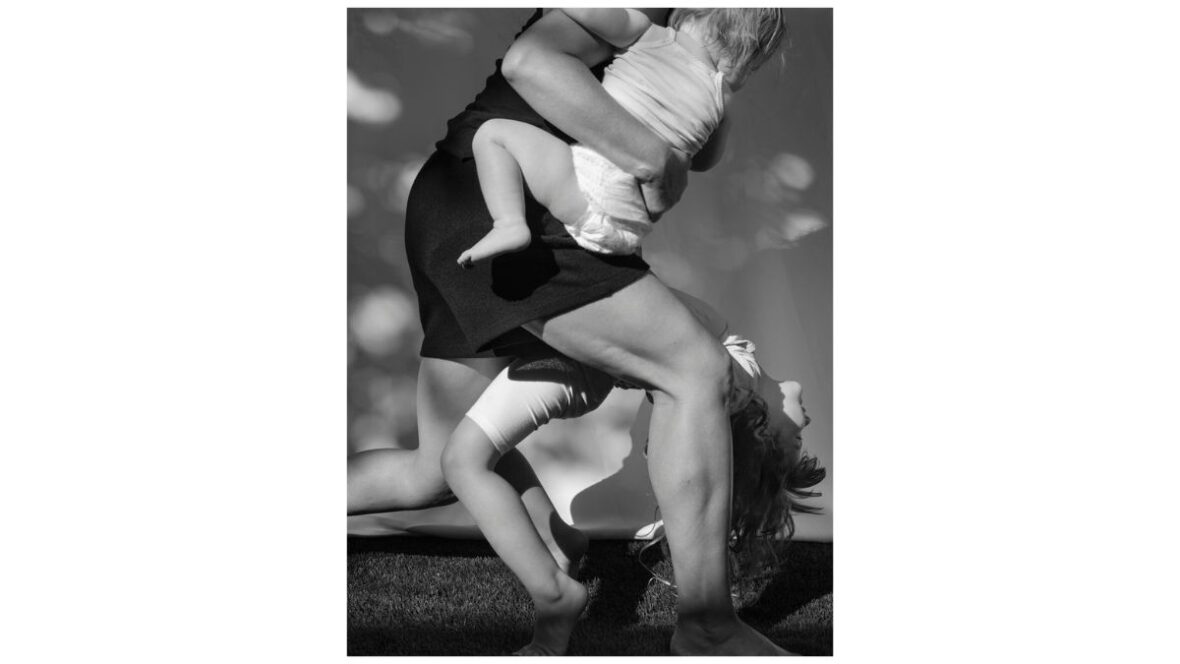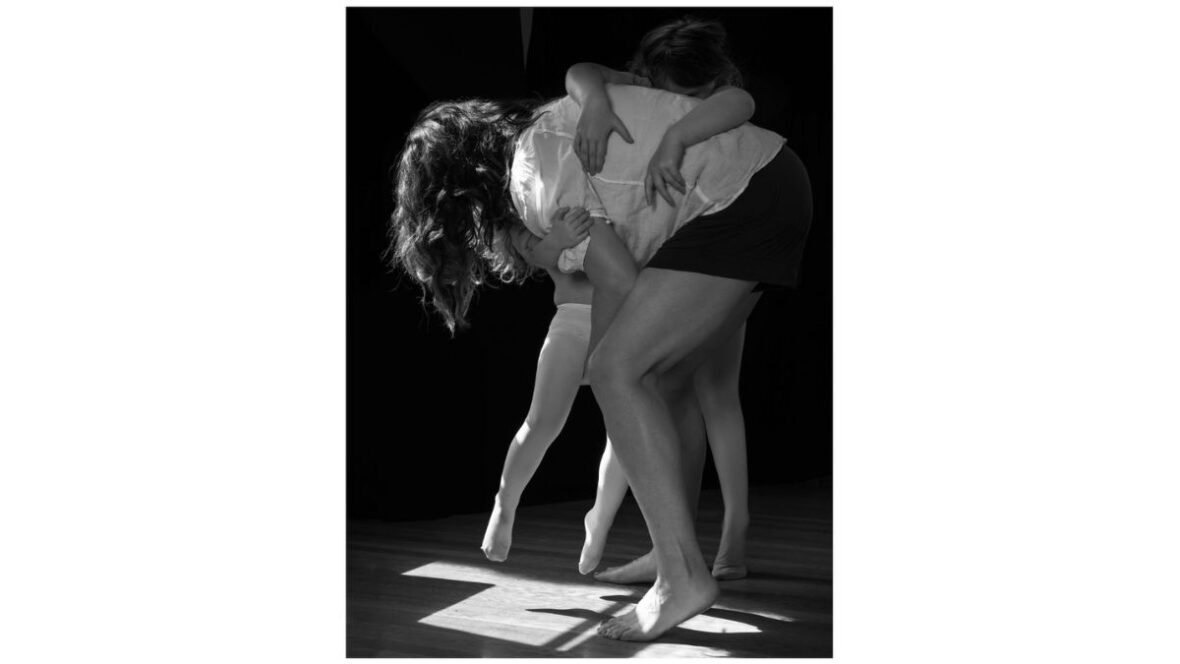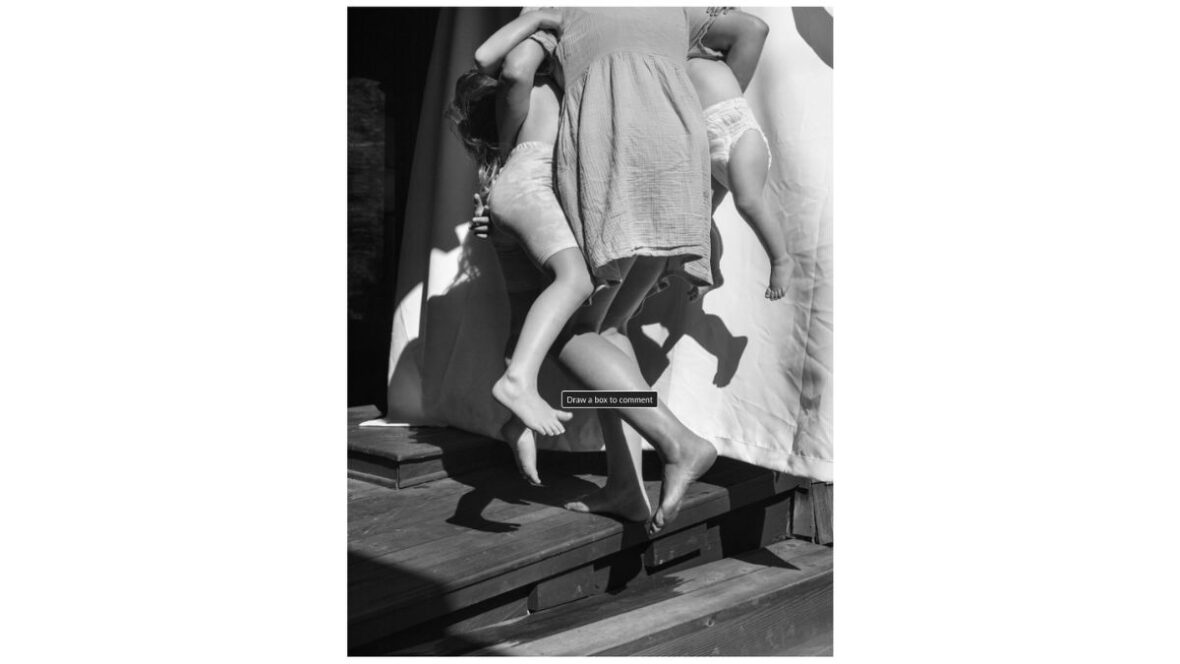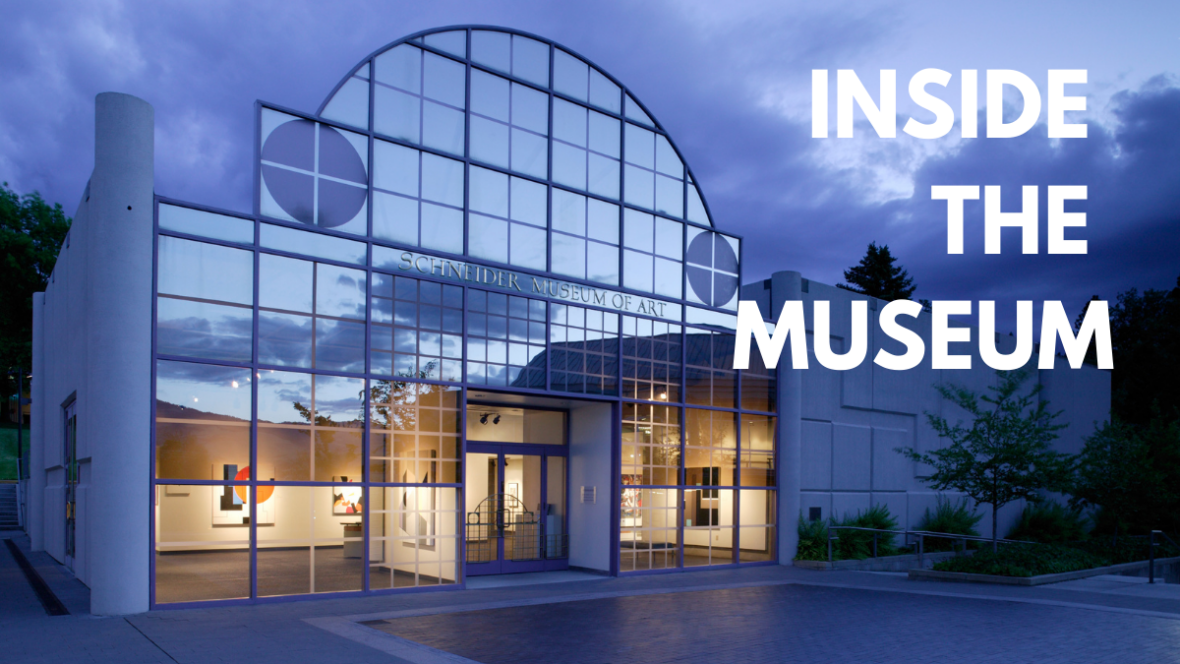PACING:
Photographs by Dru Donovan, Melanie Flood, and Tarrah Krajnak
About the Exhibition
The act of pacing involves moving forward in a measured, almost rhythmic manner, where each step is taken in consideration of the one that came before it. This exhibition grew from the ease and tension inherent to this movement—serving as a nuanced reflection on this duality through the lens-based works of three midcareer, female-identifying photographers – Dru Donovan, Melanie Flood, and Tarrah Krajnak. While each artist has a distinct aesthetic and concept, they use performative methods to document their body, and those of others, to reflect on their relationships to social histories, expectations, and structures.
When discussing photographs of the body, particularly the female body, the topic of the gaze inevitably arises. Much of the history of the medium has been informed by the male gaze, which has shaped how our past is perceived and preserved. The ‘gaze’ represents societal expectations and stereotypes that often lead to the subjugation, sexualization, and exoticization of those represented. With the prevalence of smartphone cameras and social media, mainstream visual culture today has only intensified this gaze. Rather than the male gaze, it is now all of society that turns a hyper-critical eye towards those within the frame. Through their self-referential and performative practices, Donovan, Flood, and Krajnak demonstrate how they are claiming their stake in the current visual narrative by repositioning the gaze, thwarting it, and relinquishing it. However, this exhibition also holds a binary within it: on one end, they are charting their path, looking inward, and exploring their own being; on the other, they employ the camera to document their relationship to the world. We are tasked with finding our place amongst the paths they have charted with similar self-assurance.
For as long as she can recall, Melanie Flood has used the camera as a tool for self-expression, and as a means to make sense of her position in the world. The photographs in the exhibition span almost her entire lifetime, with the earliest dating back to when she was only nine years old up to a few months ago. This early image documents her childhood bedroom, featuring perfume bottles, stuffed animals, and lavender décor. As she entered her teenage years and into her twenties, she used the camera to test out various personas that were constructed to attain clout and popularity. The images of her early years tell the story of a young woman who spent a great deal of time perfecting her physical attributes and honing her image in an attempt to shape how she wanted society to perceive her – ultra-feminine, fashionable, powerful, in control.
Nowadays, she utilizes the camera to observe herself by photographing the changes to her body in a plain, stripped-down manner while playfully shrouding and exposing the parts of her she is most curious about. We witness her still as powerful and in control as in the earlier works, but with an added openness to vulnerability. She uses fabric, filters, screens, and distortions to create an interplay that obscures and reveals her often-nude body, stripped down to its essence. The costumes, the makeup, and the veil that fashion provided in her earlier years are now replaced by constructed environments in which different cloaking methods are used to highlight and suppress various aspects of her body. While in the early days, she was performing and experimenting with and alongside the camera—these days she is performing and experimenting for the camera, as she uses her body to observe the internal and external changes she has undergone.
Flood’s photographs have consistently explored her process of shaping and accepting her femininity (in all its complexity). But more recently, she has also used the gesture of photography to reflect to the dominant culture the absurdness of gender constructs. This is most apparent in the images she has taken of herself throughout the years and continues to be evident in the series of still-life photographs she has included in this exhibition. In some photographs, the bows, creams, gems, and makeup take center stage and become the subject of the image. As such, they further her exploration of girlhood iconography and distill her critical framing of society’s gender norms. In PACING, Flood balances the serious reality of gender oppression and threat to bodily autonomy with the flippant ways in which visual culture perpetuates gender stereotypes—and she does so unapologetically with a wink, a stare, and a flare.
This strong performative stance carries through to Tarrah Krajnak’s practice, wherein she directly employs the photographic object to push back on the medium’s masculine history and reclaim it in her own way. Krajnak’s four interrelated bodies of work included in PACING acknowledge the past and the canon, while also rejecting it by way of her female body and life experiences as an Indigenous transracial adoptee. In the making of the work, she uses her body to reenact or relive the lost history of a place, people, or narrative—committing it to memory through the permanent image. Unique to her process is how the photographic object becomes a relational tool and a platform in the making of the work—her performance often takes place on it, with it, because of it, and despite it.
Krajnak’s practice is often informed by a ritual that she performs, such as writing, pacing, or reciting. These actions are often reactive and reflect her connection to the surrounding place and people. In the series Automatic Rocks / Excavation, she engages in automatic writing, a practice popularized by Surrealist artists. These meditative texts are complemented by a sketch of a rock she excavated at the same time, which she also photographed holding in her hands. The images are paired to provide a response and connection to her environment, with the rocks serving as physically and poetically grounding forces. This responsive process is also evident in Forestpath (after V. Burgin’s Photopath), an ongoing performance-based series where Krajnak references a work by conceptual artist Victor Burgin in photographing and re-photographing an installation of images she took of the forest grounds she walked at Landels Hill-Big Creek Reserve, CA. Burgin’s action referred to Jorge Luis Borges’ short story, “On the Exactitude of Science,” in which a 1:1 map is drawn so precisely that it supersedes the original location. Similarly, each new installation of this floor piece features print documentation from the previous iteration of the work. At the Schneider Museum of Art, Krajnak will also activate this photographic path, pacing along and documenting it for its next presentation. This repetitive act over time provides a continuous connective between Krajnak’s performative presence, the work’s place of origin, and its embedded future, speaking to the possibility inherent to an act of physical reclamation.
Krajnak enacted a similar gesture in her durational performance Erasing Moonrise. In this act, she taped three copies of Ansel Adams’ iconic photograph Moonrise, Hernandez, NM, 1941 to the floor, dipped her long hair in a bucket of hot coffee, and rhythmically scrubbed away the emulsion of the photographs. At the conclusion, she recites a poem she composed out of a redaction of Adams’ description of his photograph. This physical and straightforward action of erasure speaks to her aim to reclaim what she refers to as the oppressive chronicle of photography. Finally, the series Black Messengers subtly speaks to Krajnak’s Peruvian origins, as she documents the traces of Indigenous ruins and archeological sites she has encountered along her travels in her native country. The title of the series is derived from a collection of poems by the same name by the Peruvian poet Cesar Vallejo, in which he reflects on the struggles and pain resulting from modern life. Krajnak walks and documents these ancestral paths to reclaim the loss and obfuscation of histories and experiences, both personal and cultural. This cyclical process of movement, enactment, and reclamation via the camera, leads to and from Krajnak’s body, identity, and experience and thus serves as an affirmation of the opportunities within our present.
The impulse for enactment appears in diverging ways in Dru Donovan’s practice, as she employs photography and video to highlight the strength and ability of the female body, both hers and that of others. In the works included in PACING, she distills the tensions that are embodied within the gestures of athletes and caregivers—collapsing differences and erasing hierarchies. In crisp black and white, close-in and cropped frames, she juxtaposes the force and endurance necessary to perform a range of actions – a scrum, strength training, a cheerleading maneuver, nursing, hauling children – without drawing a distinction based on the identity or purpose of those performing them. In treating these bodies as equally worthy of praise and appreciation, Donovan highlights the physical (and mental) fortitude these actions demand. By weaving her newer work into her previous inquiry of athletics—she draws a direct link between them to shed light on the stamina and power that these roles mandate.
The sense of tug and pull appears throughout Donovan’s choreography of the subjects of her images – will the cement stone slip out of the strongwoman’s hands? Will the grip on the cheerleader’s foot loosen? Will the children drop to the ground? Will the dancer tumble over? Who will break lose and who will continue to be held? How will the delicate balance of mutual responsibility hold? With this collection of works, Donovan firmly posits that we all play a part in protecting and caring for others’ bodies and that despite our individual force—much relies on interdependence. This negotiation between self and object, and self and others holds within it both the isolation and depletion inherent to care, as well as the determination and tolerance that keeps us all intertwined.
PACING brings forth three unique interactions with the camera that result in the subversion of traditional perspectives and established histories. Donovan, Flood, and Krajnak each take us on diverging paths, moving steadily, slowly, in tandem, and apart, with calming assertion—forging a path to pace along with confidence, with care, and with resolve.
- Yaelle Selma Amir, Exhibition Curator
Bio:
Yaelle S. Amir is a curator, editor and educator based in Portland, OR. Her writing and curatorial projects examine the ways in which the exhibition space can serve as a tool in community building, with a primary focus on artists whose practices supplement the initiatives of existing social movements. Yaelle has spent the better part of the last two decades as an art worker—facilitating artists’ projects through exhibition-making, curatorial work, research, organizing, project management and grant writing. You can learn more at yaelleamir.com
